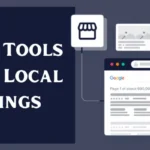Rebuilding Your Reputation – A Comprehensive Guide to Handling Negative Customer Reviews
Negative customer reviews can significantly impact a business’s reputation. However, handling them effectively can turn a challenging situation into an opportunity for growth. In this blog post, we will explore practical strategies, tools, and best practices to manage and address bad or negative customer reviews, safeguarding your brand’s reputation.
Contents
Understanding the Importance of Addressing Negative Reviews
Negative customer reviews can influence potential customers’ perceptions and purchasing decisions. Ignoring or mishandling these reviews can lead to further damage. By addressing them professionally and proactively, you can demonstrate excellent customer service and build trust.
Crafting Your Review Management Strategy
- Prompt Response: Address negative reviews promptly, ideally within 24 hours, to show customers that their feedback matters.
- Stay Professional: Respond professionally and avoid engaging in arguments or becoming defensive. Show empathy and a willingness to resolve the issue.
- Private Communication: If possible, move the conversation offline by requesting the customer’s contact information to address the matter privately.
- Apologize and Acknowledge: Express genuine apologies for any negative experiences and acknowledge the customer’s concerns.
- Offer Solutions: Provide solutions or compensation where appropriate, showing your commitment to customer satisfaction.
- Encourage Positive Reviews: Encourage satisfied customers to leave positive reviews, balancing the overall sentiment.
Tools for Managing Customer Reviews
- Google My Business (GMB): Utilize GMB to respond to and monitor customer reviews directly from the platform.
- Yelp for Business Owners: Manage and respond to Yelp reviews through the Yelp for Business Owners platform.
- Social Media Listening Tools: Use tools like Hootsuite or Sprout Social to monitor mentions and reviews across various social media platforms.
- Review Monitoring Platforms: Tools like ReviewTrackers, Trustpilot, or BirdEye help centralize and manage reviews from multiple sources.
- Customer Feedback Surveys: Implement customer feedback surveys to identify areas for improvement and address concerns proactively.
Conclusion
Negative customer reviews are inevitable, but their impact on your business’s reputation depends on how you handle them. By implementing a proactive review management strategy and utilizing the right tools, you can turn negative feedback into an opportunity for improvement and foster positive relationships with your customers.
FAQs
Can I remove negative customer reviews from review platforms?
In most cases, review platforms do not remove negative reviews unless they violate the platform’s guidelines. However, by addressing negative feedback professionally, you can mitigate their impact and demonstrate your commitment to customer satisfaction.
What if a negative review contains false information?
If a negative review contains false information or is a deliberate attempt to harm your reputation, reach out to the review platform and provide evidence to request its removal. Some platforms have dispute resolution processes for such cases.



















